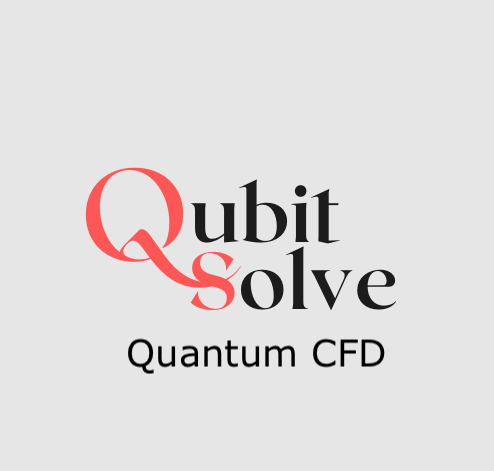Insider Brief
- Phasecraft produces suite of algorithms that makes simulating materials on quantum computers simpler and more efficient than ever before.
- Their work was published in the scientific journal, Nature.
- The approach showed that a material used in lithium-ion battery technology could be simulated with 410,000 quantum gates, compared to 1.5 trillion previously.
PRESS RELEASE — Phasecraft – the startup led by top academics developing world-leading quantum algorithms – has developed another record-breaking suite of algorithms that makes simulating materials on quantum computers simpler and more efficient than ever before.
Understanding how materials behave is one of the most promising applications of quantum computers, from pioneering new battery cathodes to creating next-generation solar cells. Yet, near-term quantum computers can’t carry out complex simulations because they’re limited by the number of operations they can reliably perform and have a limited number of qubits.
Phasecraft’s proprietary approach breaks down these limitations by bringing together classical methods of mapping materials, with novel quantum techniques for simulating their behaviour. The first stage performs calculations and optimisations on classical computers to produce an effective representation of the material, while the second produces the world’s most efficient quantum circuits to simulate that material’s behaviour. The whole framework is encapsulated in an integrated software pipeline that goes from the description of a material all the way through to a quantum circuit to simulate that material.

This approach, described in the paper published in Nature Communications, Towards near-term quantum simulation of materials, drastically cuts the number of quantum gates needed to run the simulations, by a factor of more than a million in some cases.
To put this into perspective, Phasecraft’s approach was able to show that lithium copper oxide (Li2CuO2 – a material used in advanced lithium-ion battery technology) – could be simulated with 410,000 quantum gates. The previous baseline technique used 1.5 trillion. What’s more, Phasecraft’s approach doesn’t just show how the simulation process can be simplified, but it can identify which materials are best suited for quantum simulation in the first place.
Real-world impact
This advancement, which was part funded through Innovate UK and National Quantum Computing Centre (NQCC) grants and carried out in collaboration with the Scientific Computing Department at the Science and Technology Facilities Council (STFC), is a substantial step towards being able to run complex materials simulations on near-term quantum computers, enabling simulations that were previously out of reach. It’s also further progress in Phasecraft’s mission to close the gap between quantum’s promise and the real-world applications of the technology.
Phasecraft’s breakthrough could accelerate advancements in the development of more efficient batteries, photovoltaics, supercapacitors, and fuel cells, which are crucial for the advancement of renewable energy technologies. In addition, more accurate simulations using quantum computers could lead to a better understanding of how drugs interact at the molecular level, speeding up the development of new medications and reducing the cost and time to market.
Modeling Database
To coincide with the publication of its latest paper, Phasecraft has launched its Materials Modeling Quantum Complexity Database. This database reveals the quantum circuit complexity for more than 40 materials identified as having potential for practical applications.
In particular, it highlights the quantum circuit depth of each material using the approach outlined in Phasecraft’s recent paper. Each material lists the current circuit depth and number of qubits needed, along with the main structural properties of the material. Researchers can filter the materials database by their application, from batteries to construction, nuclear energy, electronics and more.
Toby Cubitt, co-founder and CTO/Chief Science Officer at Phasecraft, said: “The improvements we’ve made in circuit depths with our latest algorithms fundamentally shift the landscape and timeline of materials simulation on quantum computers. What was once deemed beyond reach of near-term quantum computers now looks to be within striking distance. We’ve taken an important step towards the promise of modeling and designing novel materials using quantum computing.”
Ashley Montanaro, co-founder and CEO at Phasecraft, said: “By publishing our materials database, we aim to bridge the gap between quantum computing theory and practical application. With each material’s circuit depth and qubit requirements at their fingertips, scientists and engineers now have a new tool to assess where the greatest benefits of quantum computation are in the pursuit of accurate materials modeling. It’s the culmination of multiple years of research and a testament to the progress we’ve made in bringing materials modeling on quantum computers closer to reality.”
Gilberto Teobaldi, Theoretical and Computational Physics Group Leader at the Scientific Computing Department of the Science and Technology Facilities Council UKRl, said: “We were delighted to collaborate with Phasecraft on their materials modeling database. The research that went into this database, as well as the database itself, represents a significant stride in the application of quantum computing to materials science, showcasing Phasecraft and the UK’s commitment to pioneering the quantum frontier.”
Michael Cuthbert, Director of National Quantum Computing Centre, said: “When we launched the NQCC three years ago, it was with the intention to help researchers and organisations access tangible benefits from quantum computing. Phasecraft’s work in materials modeling, including the publication of its database, is exactly the type of important project that we’re excited to support and champion. Innovative companies like Phasecraft are part of our mission to make the UK a world leader in quantum computing.”
If you found this article to be informative, you can explore more current quantum news here, exclusives, interviews, and podcasts.


















